
The story of Snæland Travel, known in Iceland as Snæland Grímsson, formally begins in 1945, when Sigurður Snæland Grímsson and his wife Gíslína Valdimarsdóttir founded a small bus company offering scheduled services between Reykjavík and Mosfellsveit. At the time, Mosfellsveit was still a rural area, home to places like Reykjalundur and the Álafoss wool factory. Workers needed to get to and from the city, and there weren’t many doing that kind of transport yet.

The company was modest at first, but its foundations were strong. Sigurður had grown up around vehicles. His father, Grímur, held driver’s license number 12 in all of Iceland, a document still kept by the family today. Born around 1884, Grímur came to Reykjavík around 1910 with his wife, intending to emigrate to Canada. But their young son, Sigurður, fell dangerously ill while they waited for their ship. They made the decision to stay if he survived. He did, and they stayed. That choice changed the course of the family's history — and quietly, Icelandic transport history too.
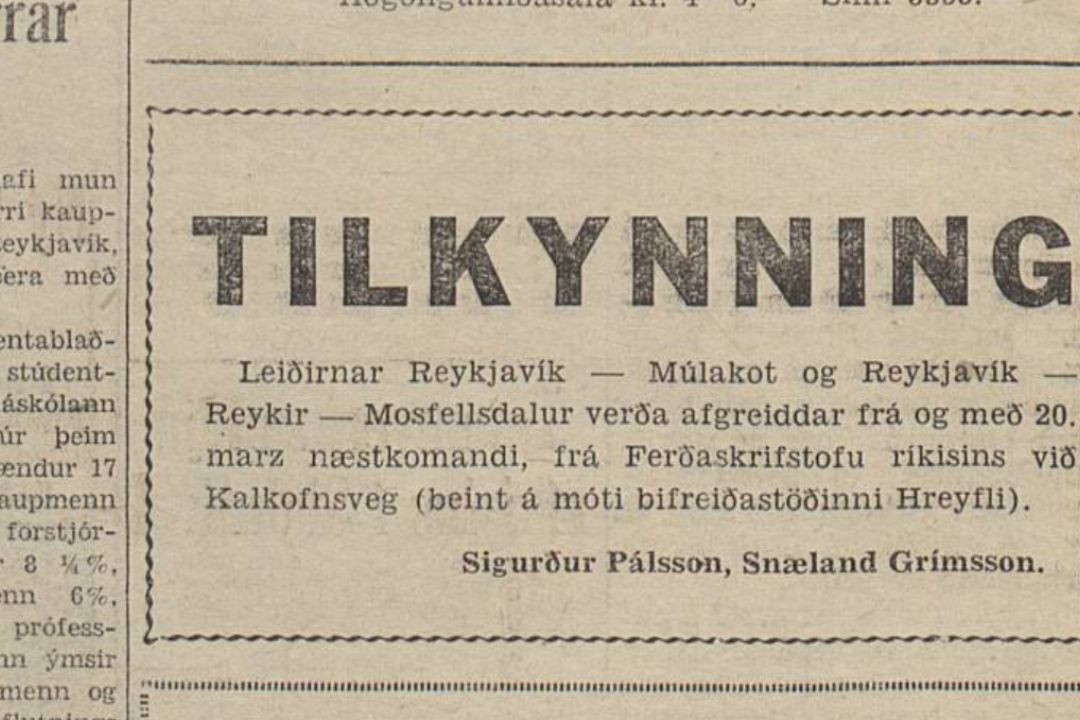
Grímur spent his working life around vehicles, mostly in the Westfjords, and Sigurður followed closely in his footsteps. In addition to the bus routes, the early business also operated a repair shop and imported spare parts, all from their base in Mosfellsbær. It didn’t take long before they became a known name in local transport, simply by doing the work well and showing up reliably, every day.
In the 1960s, Snæland Grímsson began expanding its scope beyond scheduled services and technical maintenance into more structured and meaningful travel. One key offering during this time was a series of educational day tours and weekend trips tailored to Icelandic farmers. These trips gave people the opportunity to explore new parts of the country while exchanging ideas and learning from other regions. In one example, a group traveled with Snæland to Þykkvabær to learn about potato farming methods. Another itinerary advertised a two-and-a-half-day tour from Reykjavík to Blönduós, passing through Hveravellir and Auðkúluheiði. These were early examples of experience-focused travel — still domestic, but already pointing to a deeper kind of journey.
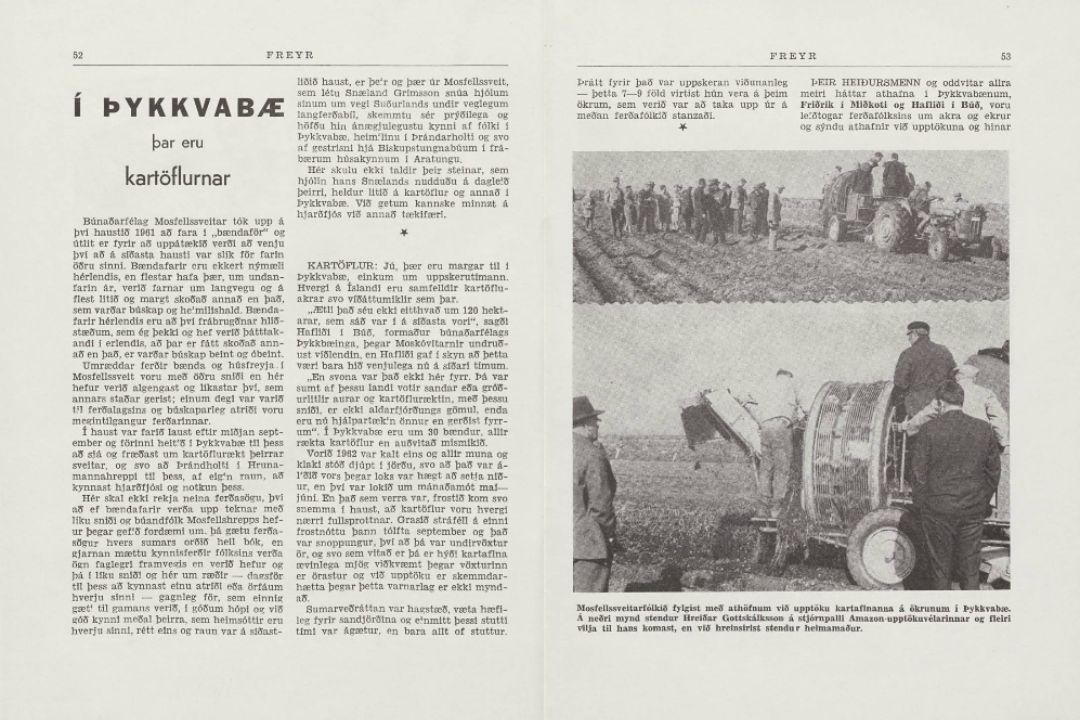
During this same decade, the next generation was beginning to step into the business. Lárus Sigurðsson, son of Sigurður Snæland Grímsson, had started driving at a young age and quickly became central to the company’s daily operations. By the late 1960s, Lárus was taking on increasing responsibility, especially as larger opportunities emerged in the tourism space.
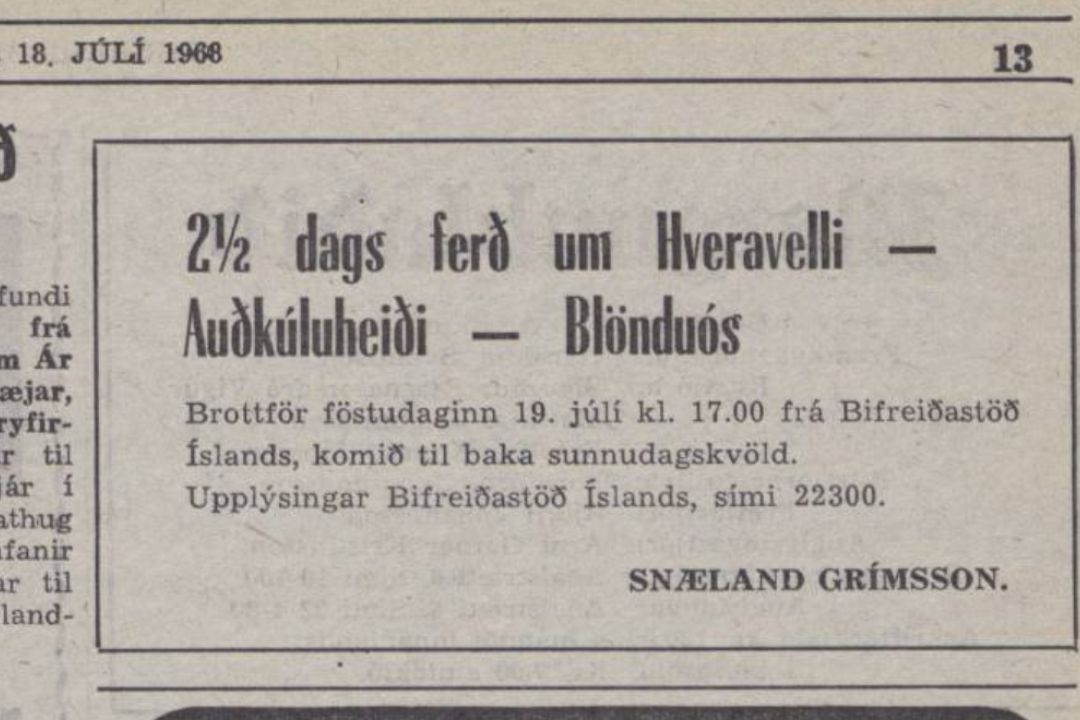
Around this time, Páll Arason, one of Iceland’s earliest tourism operators, began scaling back his own operations. Páll had been a pioneer in organizing group travel, especially long camping expeditions across the highlands for German visitors. These tours often lasted twelve to fourteen days and required both rugged vehicles and a logistical eye. Snæland Grímsson had long provided vehicles and drivers for Páll’s tours. When he stepped back around 1967–1968, Snæland took over much of the work, purchasing vehicles and continuing the highland routes that had become his hallmark.
The transition marked a turning point. The company moved more fully into travel logistics, not just as a contractor but as a provider in its own right. It maintained its own buses, prepped the vehicles, managed the routes, and hosted the travelers. Lárus was now leading that work, running summer operations in the highlands and laying the foundation for a more defined role in tourism.
“My brother Hlynur and I, we went on trips with my parents a lot. Around 1972-1975 they were taking groups of German tourists that they took over from Páll Arason. These were all two-week camping trips across the highlands. They bought an old Mack International from the sales committee. This car had a house on the back and had been used as a mobile electrical workshop at Keflavík Airport. I remember it was a bright yellow Mack International, with 10 wheels and all. It had a gasoline engine and two 500-liter gas tanks on each side. It consumed so much that it was on the verge of not being able to last a day on long trips. No one ever came to buy that much gas. This car was always used in the summer and was called Troll. It was a kitchen truck and my mother worked as a cook in this car. Dad drove the bus. I went on trips like this with them very often. It was a lot of fun.”
– Hallgrímur Lárusson CEO, Bílar, fólk og ferðir podcast (Feb, 2024)
Though the travel season was still short — usually mid-June to mid-August — the company's approach remained steady. People had other jobs in the winter. In Lárus’ case, he played drums in a dance band to earn enough for tires and essentials to get the vehicles ready again for the next season.
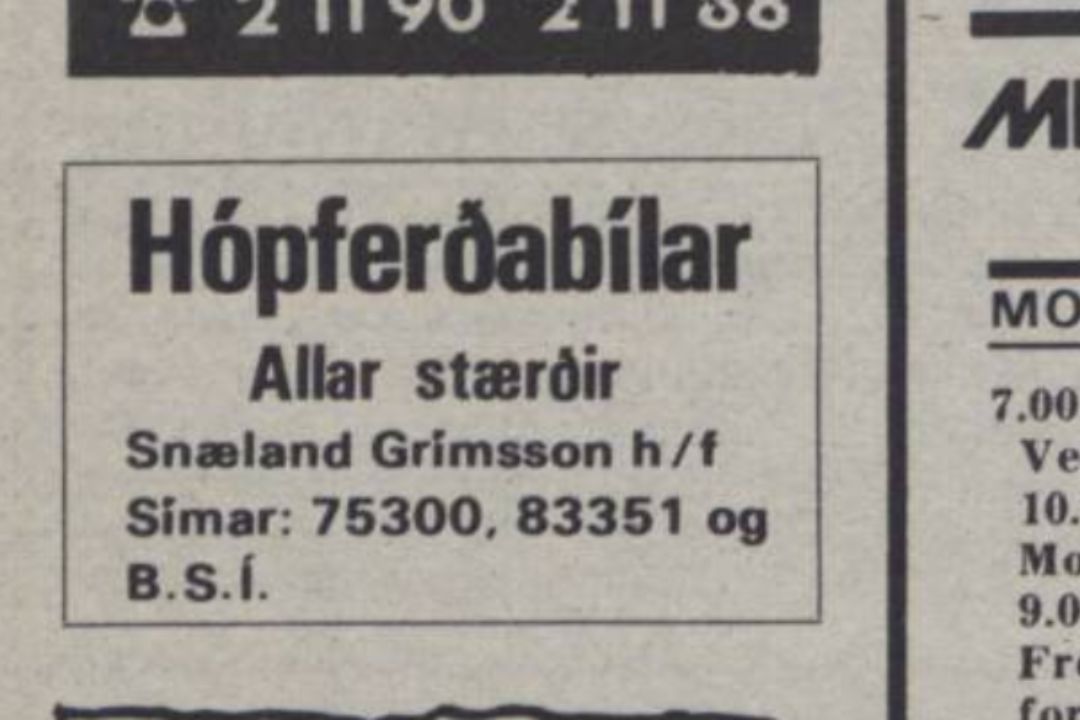
By the end of the 1970s, Snæland Grímsson was no longer just a transport provider. It had become a trusted name in group travel, known for dependable vehicles, knowledgeable drivers, and an ability to navigate both the terrain and the people it served.
In the 1980s, Snæland Grímsson Travel began to appear more clearly as a travel company. The era marked a shift from being solely a transportation operator into acting as a full-service tour provider and agency. This was a time of increasing interest in both domestic and international group travel among Icelanders, and Snæland was quick to adapt to the change.
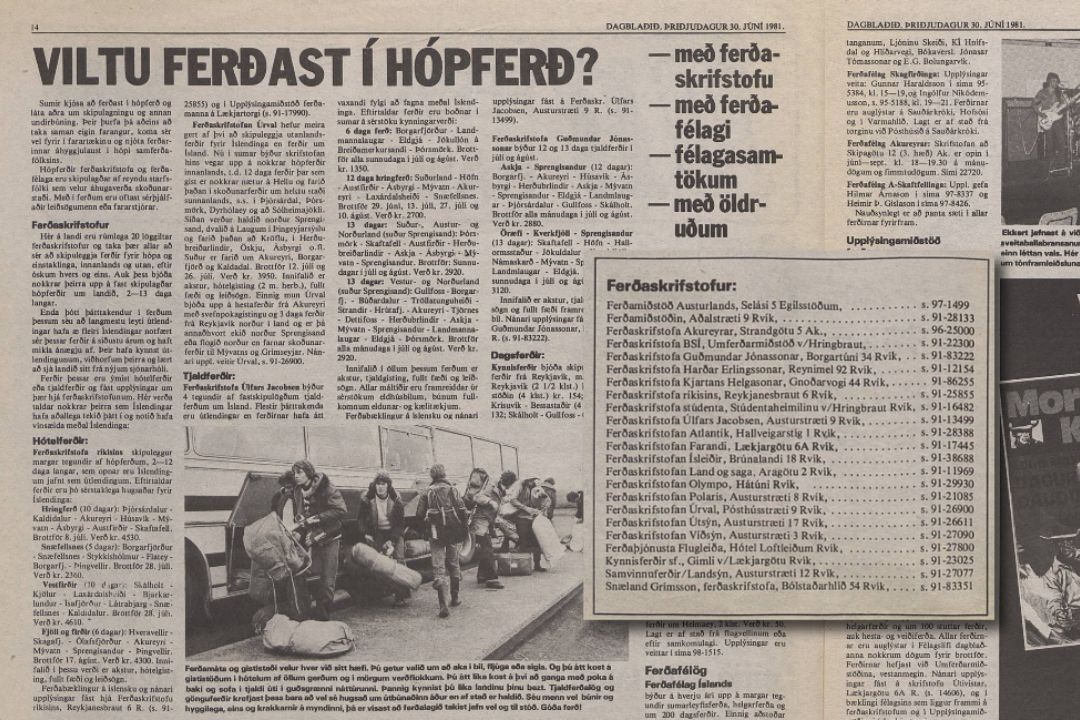
The company began offering group trips that were easy to join, with everything arranged in advance. These kinds of tours appealed to people looking to travel without the burden of planning. Some focused on Iceland’s interior, while others extended abroad. Among the destinations were guided trips to Germany, which became a popular offering for Icelanders during this period.
At the same time, the company was actively involved in efforts to promote Iceland as a destination abroad. In 1983, Snæland Grímsson Travel was one of only a handful of Icelandic companies to take part in a travel conference in London. It was one of several early steps that placed Iceland on the map for group travel and tourism.
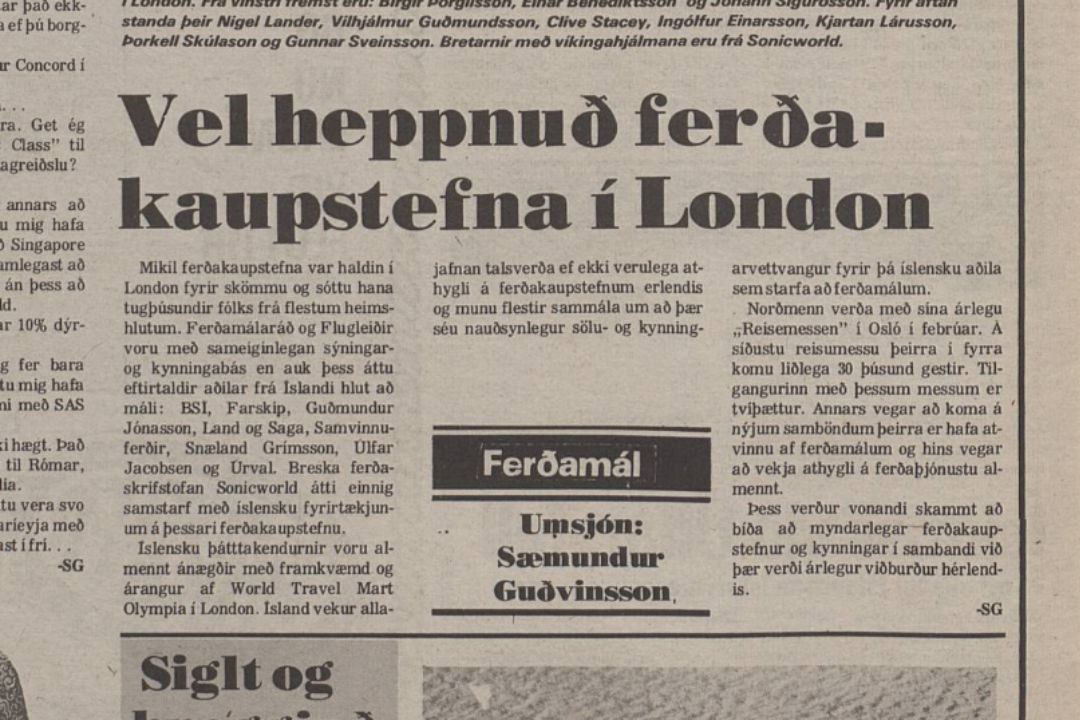
Domestically, Snæland was expanding its offerings as well. By the mid-1980s, the company was advertising five-day highland tours to Mývatn under its own name, and later in the decade it began offering car rentals. These services grew out of the company’s core strengths in vehicle management and logistics, and signaled a broader view of what Snæland could offer.

In 1983, Snæland was also involved in establishing Ferðaval, a travel agency that focused on both inbound and outbound travel. Through Ferðaval, the company aimed to serve Icelanders looking to explore abroad, as well as incoming groups, some of which numbered in the hundreds. Snæland provided the vehicles and drivers for these larger operations, particularly for highland tours.
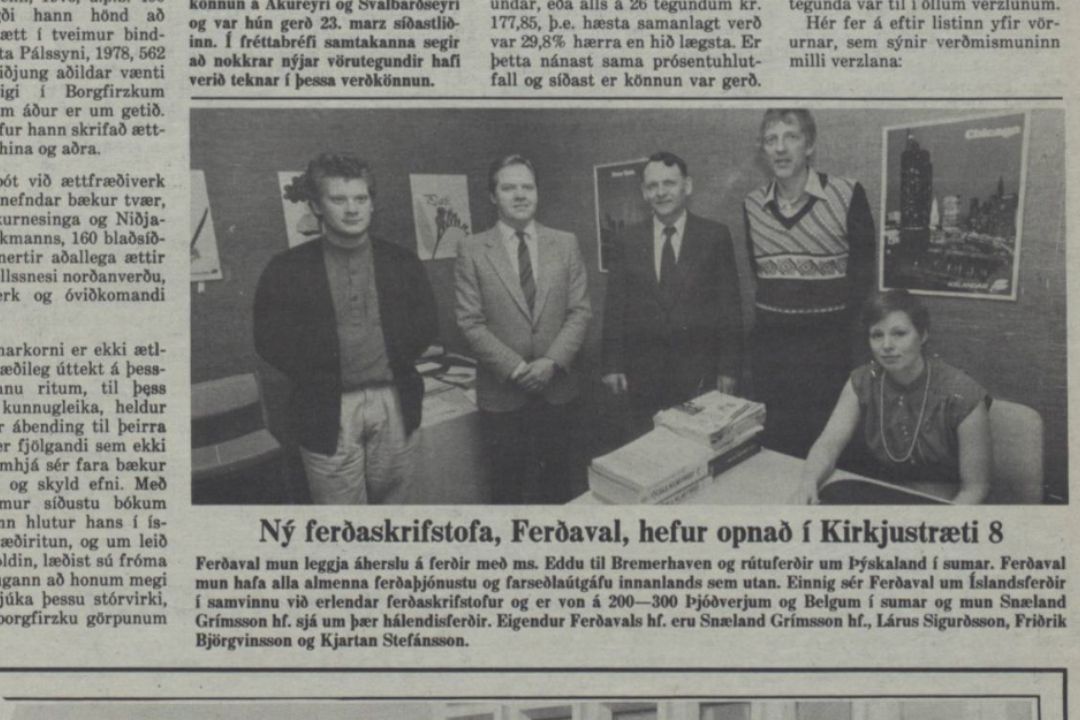
The company’s experience in remote terrain, and its long-standing connections in the travel world, allowed it to move seamlessly between roles as operator and organizer. This dual capability became one of its core strengths.
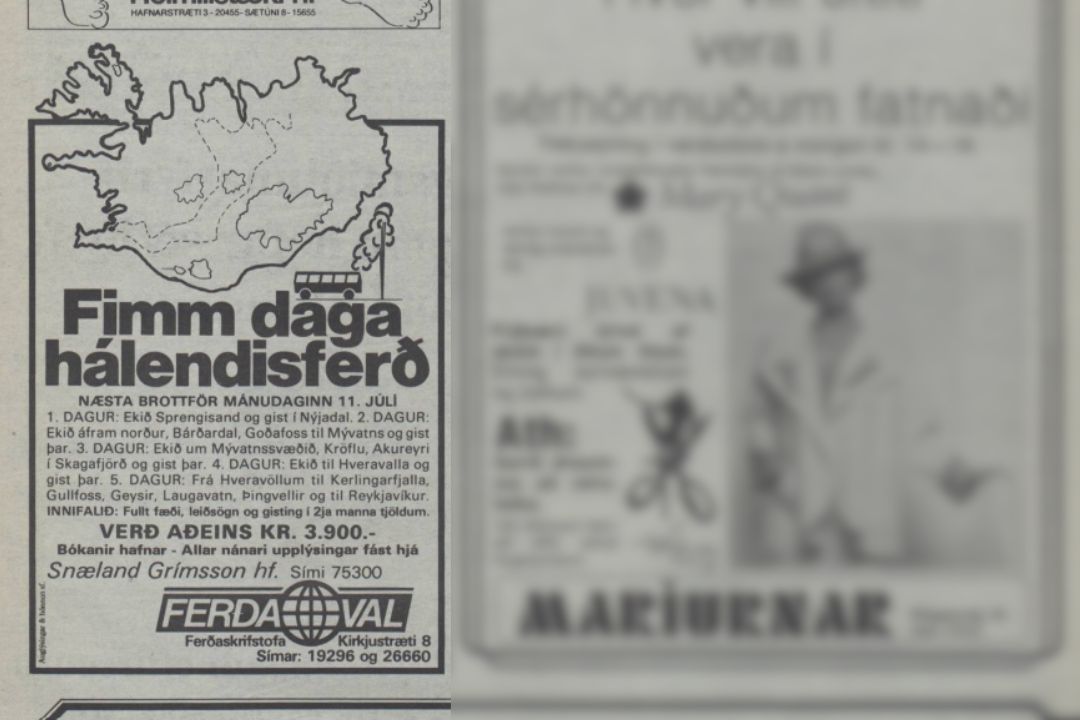
By the 1990s, the travel side of the business had become a natural extension of everything that came before. Advertising now featured multi-day guided hiking tours, including the four-day Laugavegurinn trek, with all services included.

What had started with scheduled buses between Reykjavík and Mosfellsveit had, over the course of five decades, grown into a travel company in its own right that continued to expand its vehicle fleet.
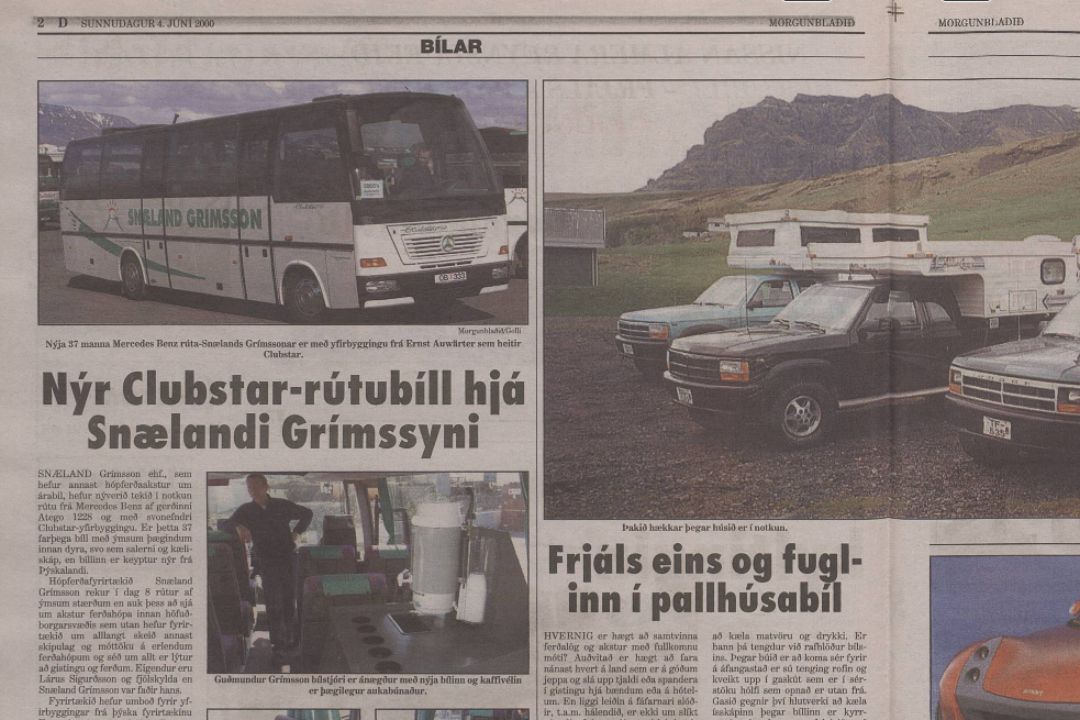
In 2010, when Eyjafjallajökull erupted and disrupted global air travel, few could have imagined how far the ripple effects would reach. At the time, Iceland was still recovering from the 2008 financial collapse. The country had been labeled a failed economy and tourism was still growing, but not yet dominant.Then the eruption happened. With it came images of ash clouds, ice, and fire broadcast around the world. Flights were canceled. Travelers were stranded. But something else happened too. Suddenly, Iceland was no longer a small country tucked between continents. It was the focus of international attention.For companies like Snæland Grímsson Travel, the shift was immediate and dramatic. Before the eruption, Iceland often had to be introduced at travel fairs. People would ask where it was or confuse it with Greenland. After the eruption, the interest was constant. There were lines at the booth.
“…after the eruption of Eyjafjallajökull. Back then, everyone knew where Iceland was in the world. Before, you had been at exhibitions all over the world trying to sell Iceland, and people would ask "Where is it?" or if we live in snow houses. After 2010, there was a line outside the stand. Everyone wanted to come.”
– Hallgrímur Lárusson CEO, Bílar, fólk og ferðir podcast (Feb, 2024)
The following years brought a level of demand the company had never seen before. Between 2014 and 2017, tourism growth was sharp and difficult to manage. The entire industry was stretched. Vehicles were in short supply. Staff was hard to find. Hotel availability was a daily challenge. The quiet months of June, July, and August that had once defined the tourism season were no longer enough. It had become year-round work.
“The summer tourism service was June, July and August, … this did not change until after 2010, after the eruption of Eyjafjallajökull. Then, winter tourism began. It is not long ago. Winter tourism didn't really take off until around 2012-2014…” – Hallgrímur Lárusson CEO of Snæland Travel, 2025 interview.
– Hallgrímur Lárusson CEO, Bílar, fólk og ferðir podcast (Feb, 2024)
This period changed the scale of operations at Snæland Grímsson. The company had to grow quickly and keep pace, not only with the number of travelers, but with the expectations that came with a global audience. The groundwork laid over decades — in logistics, in vehicle maintenance, in steady operations — became the reason it could respond.
It was a turning point, not just for the company, but for the role of tourism in Iceland itself.
As the post-eruption tourism boom continued, Snæland Grímsson Travel faced a new challenge. The business was growing, but it was spread across multiple locations in Reykjavík. Coaches were stored in one place, the office was in another, and the lack of coordinated space was beginning to affect daily operations.
In 2016, the company secured a plot of land in Hádegismóar. It was a major investment, but a necessary one. Planning began shortly after, and by June 2017, construction on a new headquarters was underway. The building was designed to bring everything under one roof — vehicle depot, maintenance facilities, and office space. It would mark the first time in the company’s history that all operations were housed in a single, purpose-built location.
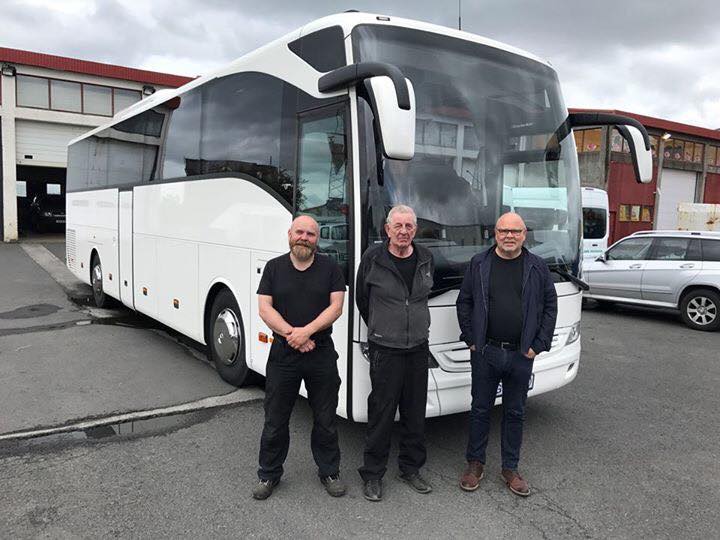
The first stage was a 1,100 square meter garage, completed in 2018. It was a breakthrough in terms of workflow and infrastructure. Drivers now had access to a proper wash bay and winter maintenance space. After long days and nights — sometimes returning from northern lights tours at one in the morning — it made a real difference to be able to clean and park a vehicle in a warm, functional space in minutes.
For the staff, especially those who had been with the company for many years, the move to Hádegismóar was a clear sign of progress. It reflected not just the growth of the tourism industry, but the company’s commitment to doing things properly and sustainably, even during unpredictable cycles of boom and contraction.
The next phase, the construction of the office building, would take longer and face unforeseen challenges — but the shift to a unified home base had begun.
By early 2020, Snæland Grímsson Travel had just finished the most ambitious investment in its history. The garage had been completed two years earlier and now the new office building in Hádegismóar was nearly ready to move into. The company had grown steadily for more than a decade and had weathered the intensity of the tourism boom after the 2010 eruption. Then, suddenly, everything stopped.
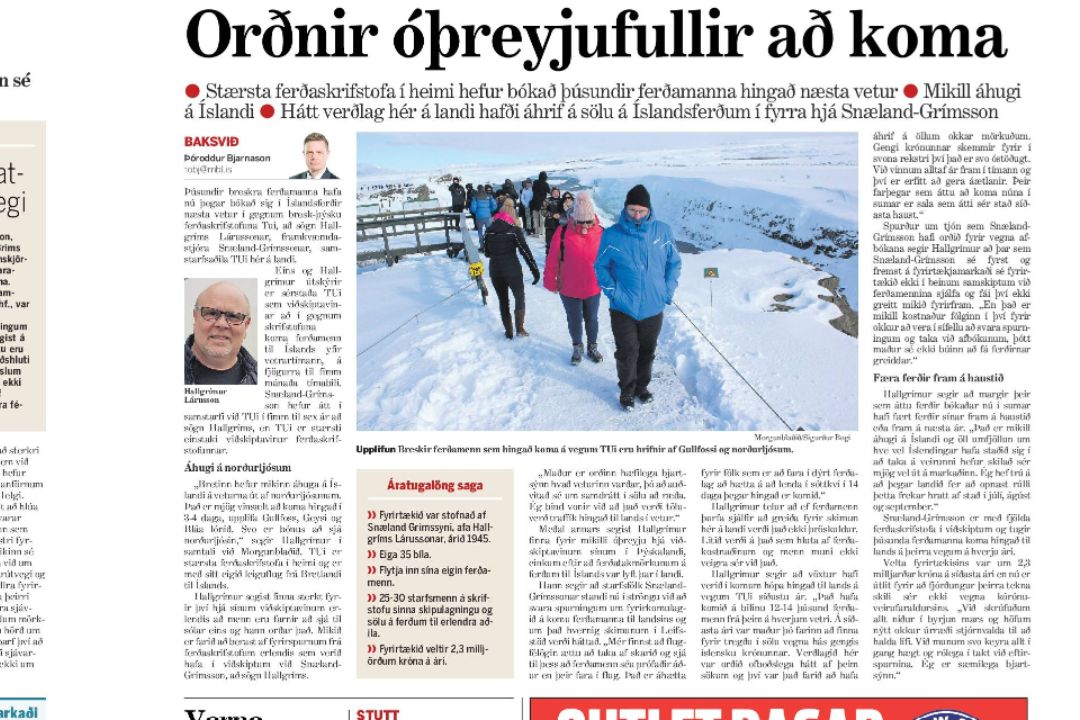
The arrival of COVID-19 brought international travel to a halt. Like nearly every company in the tourism industry, Snæland faced a complete collapse of its operating revenue. In the early months, there was still hope that summer travel might rebound. Hallgrímur Lárusson, then CEO, shared in interviews that although they had already lost at least a quarter of the year’s income, travelers were postponing rather than canceling. There was cautious optimism that the autumn or winter might bring some recovery.
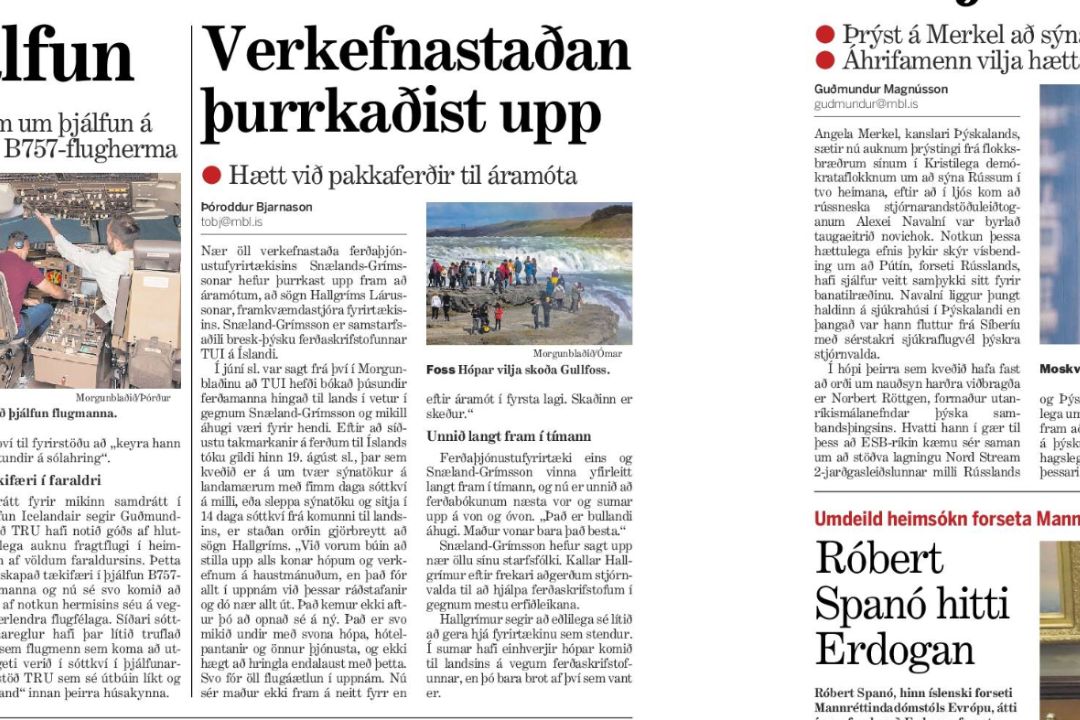
But by August, the situation had worsened. With border closures and restrictions still in place, the company made the decision to pause nearly all operations through the end of the year. Most of the staff had to be laid off. Only a small team remained, working to maintain the fleet and prepare for an eventual return. The focus shifted to staying in contact with partners, rebooking groups for spring and summer 2021, and keeping the core of the business intact.
Throughout this time, construction on the new offices had been delayed. Interior work was stopped, and there was no clear timeline for when it could resume. The building stood unfinished, a symbol of both the growth the company had just achieved and the uncertainty it now faced.
Despite the scale of the disruption, the approach remained steady. There was no dramatic pivot or attempt to reinvent the business. Instead, the team focused on what had always mattered most — maintaining relationships, keeping the vehicles in good condition, and waiting for the moment travel would return.
The new building at Hádegismóar had stood quiet for some time. The garage had been in use since 2018, but the plan had always been to bring the office staff under the same roof. The structure itself was completed in 2019, and initial plans were to move in the following year.
By early 2020, interior work was underway. Then came the pandemic. With uncertainty ahead, Hallgrímur made the decision to pause the project. The risk was too high. Construction stopped, and the building remained unused as the company operated with a small crew through a long period of disruption.
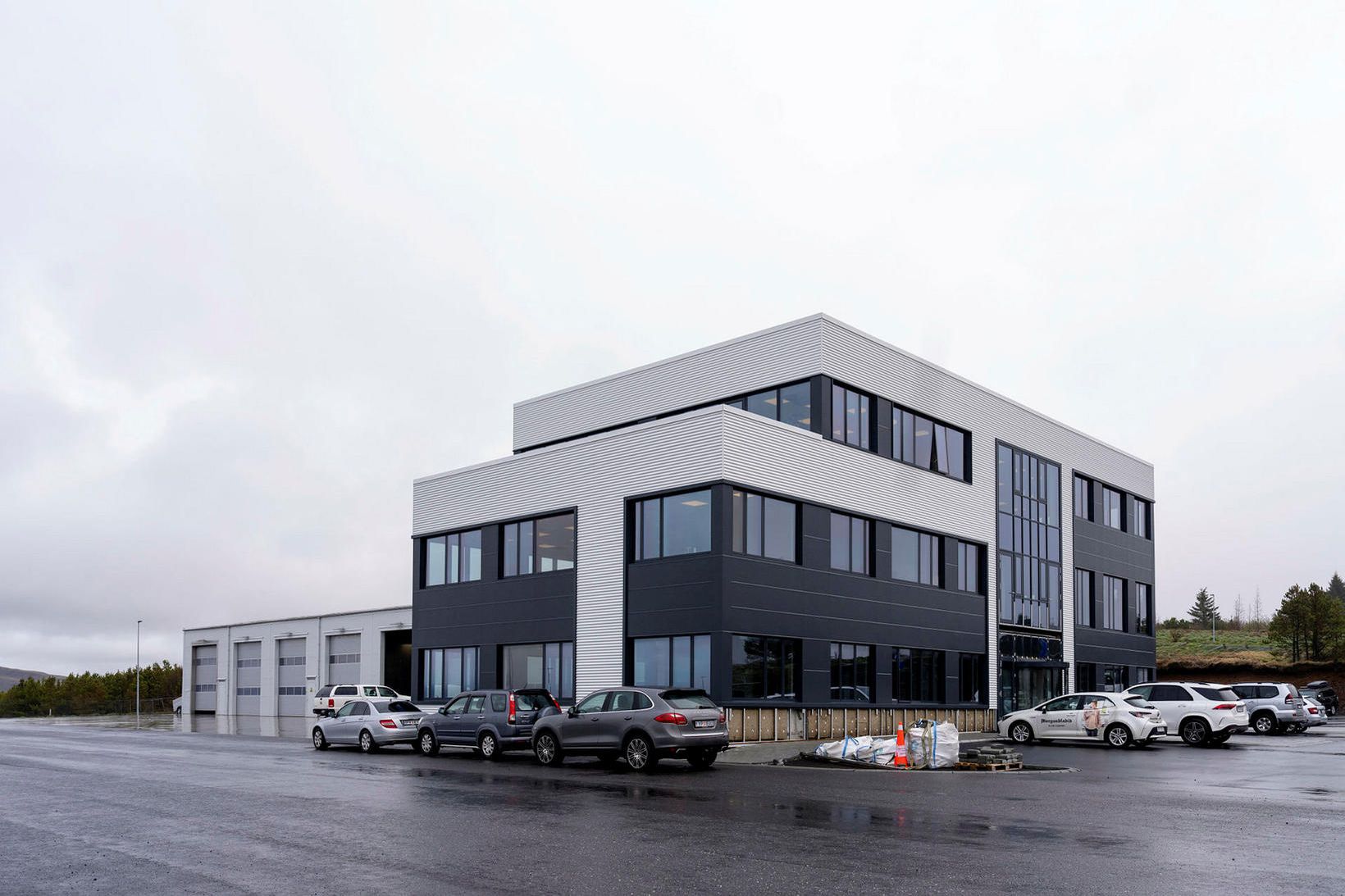
Work resumed in early 2023. The office was finally moved into in May of that year. For the team, the transition represented more than just new furniture and extra floor space. For the first time, everything was in one place. Vehicles, workshops, drivers, mechanics, office staff, and operations — all within walking distance.
The building sits on nearly 12,000 square meters of land. It includes washing facilities, storage, and space for the entire fleet, making it one of the most functional and purpose-built transport hubs in the industry. For drivers who had spent years parking off-site and working without a central hub, the difference was immediate.
It wasn’t just an operational upgrade. It was a quiet milestone that marked a return to momentum after years of uncertainty. The team that returned was smaller, but many were the same. Longtime staff came back to a workplace that was more complete than the one they had left. The new space reflected where the company had come from and where it was headed next.
In 2025, Snæland Grímsson Travel will mark 80 years in operation. What began in Mosfellsveit in 1945 as a small scheduled bus service run by Sigurður Snæland Grímsson and his wife Gíslína has become one of Iceland’s most enduring and respected travel companies, operating today Snæland Travel for B2B, Travel Reykjavík for individual travelers, Private Driver for private tours, and Airport Shuttle Iceland.
Across eight decades, the company has weathered economic shocks, natural disasters, and industry transformations. It has also grown, adapted, and expanded its services while remaining rooted in the same principles it was founded on: reliability, mechanical know-how, and personal responsibility for the journey.
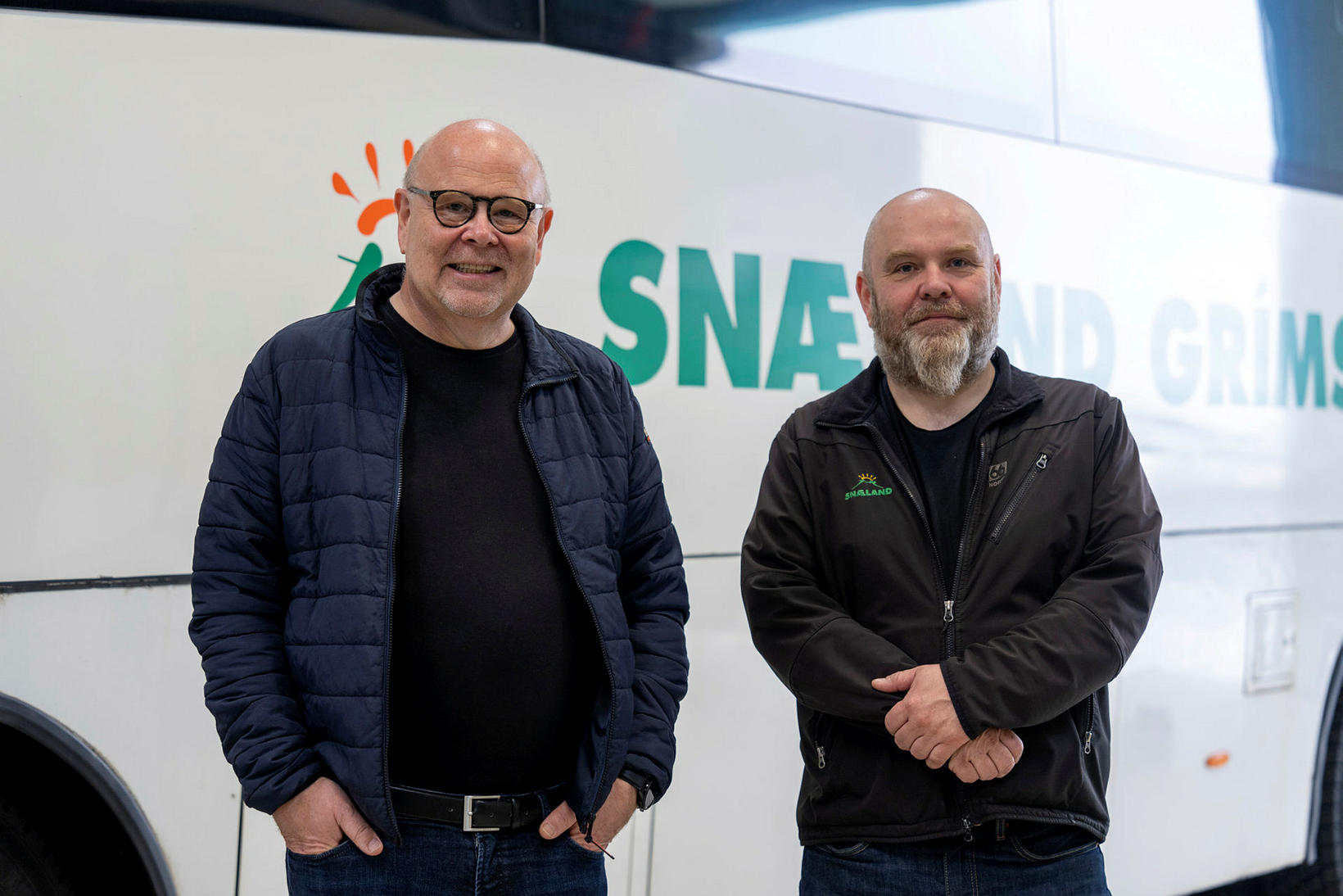
Today, the company is owned and operated by brothers Hallgrímur and Hlynur Lárusson, the fourth generation in a direct line of vehicle men. Hallgrímur oversees the business side and operations. Hlynur manages the fleet, vehicles, and purchasing. Together, they continue the work that began with their great-grandfather Grímur, their grandfather Sigurður, and their father Lárus. Building on their family legacy.
Four generations of the same family have worked behind the wheel, under the hood, and at the desk, steadily evolving with the times. From early group trips for Icelandic farmers to two-week highland camping tours with German visitors, from wartime surplus trucks to purpose-built super jeeps, Snæland Grímsson has been part of how people experience Iceland, and in many cases, how Iceland has introduced itself to the world.
Looking ahead, the company continues to operate with the same values it always has. The tools have changed, the technology has improved, and the tours have become more varied. But the work remains hands-on, and the people who do it remain close to every part of the operation.
In 2025, the milestone will be marked not just by a number, but by the road already travelled and the belief that good work, done with care, is always worth doing again.
Today, the company operates everything under a single roof and manages each part of the journey in-house from start to finish. The garage, the offices, the drivers, the dispatch — it’s all connected, and all within reach.
This structure makes it easier to keep track of the details and take responsibility for the full experience. Vehicles are maintained on-site, routes are coordinated directly, and the people who plan the journeys are often the same ones who’ve driven them before.
From the same building, Snæland Travel runs all four parts of its operation:
Snæland Travel (also known as Snæland Grímsson) works with travel agencies, operators, and group organizers.
Travel Reykjavík offers a mix of scheduled tours, custom options, and flexible packages for individual travelers.
Private Driver focuses on private, tailored journeys with more flexibility and fewer fixed stops.
Airport Shuttle Iceland provides direct transfers between the airport and Reykjavík, with real-time flight tracking and door-to-door service.
Learn more about us.